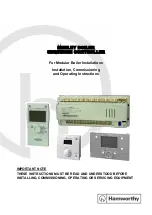
Table 11-8. EPI Host-Bus 8 Signal Connections (continued)
HB8 Signal (
MODE
=XFIFO)
HB8 Signal (
MODE
=ADNOMUX (Cont.
Read))
HB8 Signal (
MODE
=ADMUX)
CSCFG
EPI Signal
X
X
X
0x0
EPI0S35
X
X
X
0x1
X
X
X
0x2
X
X
X
0x3
X
X
X
0x4
X
CRE
CRE
0x5
X
0x6
a. "X" indicates the state of this field is a don't care.
b. When an entry straddles several row, the signal configuration is the same for all rows.
c. The clock signal is not required for this mode.
Table 11-9 on page 833 shows how the
EPI[31:0]
signals function while in Host-Bus 16 mode.
Notice that the signal configuration changes based on the address/data mode selected by the
MODE
field in the
EPIHB16CFGn
register, on the chip select configuration selected by the
CSCFG
and
CSCFGEXT
field in the same register, and on whether byte selects are used as configured by the
BSEL
bit in the
EPIHB16CFG
register.
Although the
EPI0S31
signal can be configured for the EPI clock signal in Host-Bus mode, it is not
required and should be configured as a GPIO to reduce EMI in the system. Any unused EPI controller
signals can be used as GPIOs or another alternate function.
Table 11-9. EPI Host-Bus 16 Signal Connections
HB16 Signal
(
MODE
=XFIFO)
HB16 Signal (
MODE
=ADNOMUX (Cont.
Read))
HB16 Signal (
MODE
=ADMUX)
BSEL
CSCFG
EPI Signal
D0
D0
AD0
b
X
X
a
EPI0S0
D1
D1
AD1
X
X
EPI0S1
D2
D2
AD2
X
X
EPI0S2
D3
D3
AD3
X
X
EPI0S3
D4
D4
AD4
X
X
EPI0S4
D5
D5
AD5
X
X
EPI0S5
D6
D6
AD6
X
X
EPI0S6
D7
D7
AD7
X
X
EPI0S7
D8
D8
AD8
X
X
EPI0S8
D9
D9
AD9
X
X
EPI0S9
D10
D10
AD10
X
X
EPI0S10
D11
D11
AD11
X
X
EPI0S11
D12
D12
AD12
X
X
EPI0S12
D13
D13
AD13
X
X
EPI0S13
D14
D14
AD14
X
X
EPI0S14
D15
D15
AD15
X
X
EPI0S15
-
A0
b
A16
X
X
EPI0S16
-
A1
A17
X
X
EPI0S17
833
June 18, 2014
Texas Instruments-Production Data
Tiva
™
TM4C1294NCPDT Microcontroller
















































